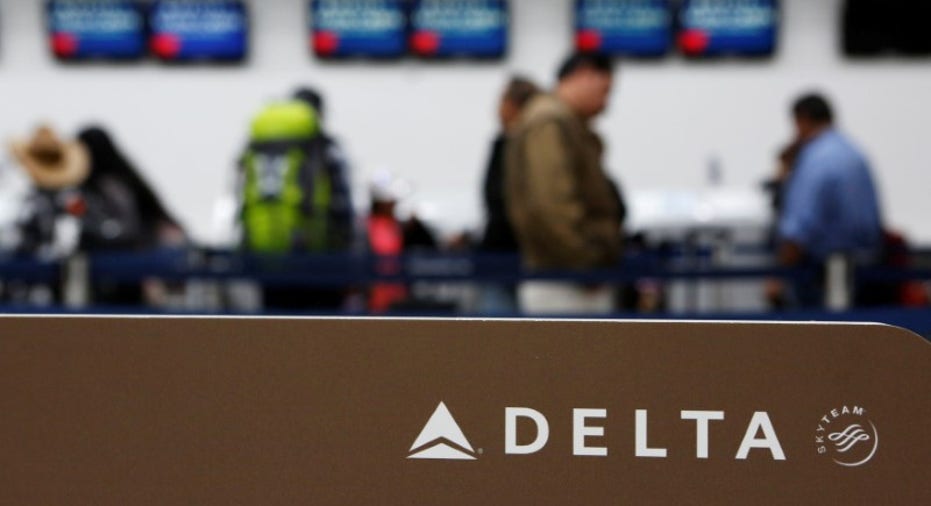5 Key Highlights From Delta Air Lines' Q1 Earnings Call

Over the past two years, Delta Air Lines (NYSE: DAL) has been thwarted repeatedly in its attempts to return to unit revenue growth. This has prevented the company from offsetting recent increases in its fuel and labor costs, causing some margin erosion.
Indeed, Delta reported a sharp decline in profitability in its Q1 earnings release last week. However, management remains confident that the carrier's revenue and earnings will recover soon. Here are five key points that Delta executives made on the company's recent earnings call to support their contention that results are about to improve.
Unit revenue is finally getting back on track
Delta entered the first quarter expecting unit revenue to rise 0%-2%. However, the unit revenue environment improved at a slower-than-expected pace during the quarter. This caused passenger revenue per available seat mile (PRASM) to slip 0.5% in Q1.
Delta missed its unit revenue forecast last quarter. Image source: Delta Air Lines.
However, demand trends have improved recently. Looking out over the next few months, fares for advance bookings are up significantly year over year. Furthermore, while last-minute fares haven't recovered to the highs of early 2015 yet, they have been improving over the past year.
As a result, Delta has forecast that PRASM will increase 1%-3% year over year in the second quarter. Unit revenue growth would have been even stronger but for a series of strong storms that severely disrupted operations in Atlanta (Delta's largest hub) earlier this month.
Time to return to profit growth
Delta projects that its modest unit revenue growth will be enough to get profit growing again in the second quarter. While non-fuel costs are expected to rise significantly, this will be offset by a year-over-year decline in fuel expense. (Delta incurred big hedging losses in the year-ago period.)
Looking further ahead, fuel will become a year-over-year headwind again in the second half of 2017. However, non-fuel cost growth will slow dramatically, and further unit revenue gains should enable Delta to continue expanding its profit margin.
International overcapacity remains a problem
Overcapacity in international markets represents the biggest threat to Delta's unit revenue and profitability going forward. The rapid growth of low-cost transatlantic carriers could prove particularly problematic, as it could spark a price war in what has traditionally been a very lucrative market.
As a result, Delta plans to be very cautious about its international capacity. Right now, it is scheduled to receive 24 new widebody aircraft between 2017 and 2019, with 28 more coming in subsequent years. However, Delta may defer or cancel some of these orders in order to slow its international capacity growth.
Delta may defer some of its orders for widebody planes. Image source: Delta Air Lines.
The Aeromexico joint venture is about to begin
Joint ventures are another tool that Delta is using liberally to bolster its profitability in international markets. Later this month, it will launch a new joint venture with Aeromexico for flights between the U.S. and Mexico. Delta also recently announced plans to form a joint venture with Korean Air for flights to Asia.
These joint ventures allow Delta to coordinate on schedules and pricing with its partners. This typically unlocks more connecting itinerary options, especially between smaller destinations, driving unit revenue growth.
Delta's refinery is back to producing profits
While fuel prices will be a cost headwind for Delta Air Lines during most of 2017, the company is getting relief on one front: refinery profits. Delta is unique among U.S. airlines in that it bought an oil refinery five years ago as part of its fuel hedging strategy. This unusual move has produced mixed results.
Delta's refinery earned a strong profit of $290 million in 2015, but it swung to a $125 million loss last year due to tough industry conditions. However, it moved back into the black last quarter, posting a $44 million profit. For the full year, Delta expects the refinery to earn about $100 million, reducing the carrier's "all-in" fuel costs.
10 stocks we like better than Delta Air Lines When investing geniuses David and Tom Gardner have a stock tip, it can pay to listen. After all, the newsletter they have run for over a decade, Motley Fool Stock Advisor, has tripled the market.*
David and Tom just revealed what they believe are the 10 best stocks for investors to buy right now... and Delta Air Lines wasn't one of them! That's right -- they think these 10 stocks are even better buys.
Click here to learn about these picks!
*Stock Advisor returns as of April 3, 2017
Adam Levine-Weinberg owns shares of Delta Air Lines. The Motley Fool has no position in any of the stocks mentioned. The Motley Fool has a disclosure policy.